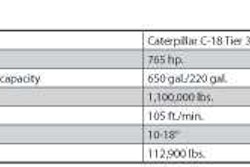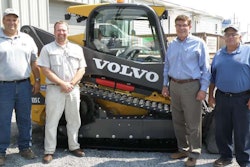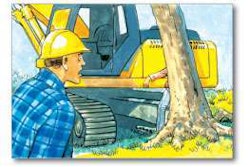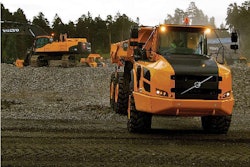Unsafe openings
Don’t risk falling when working above ground
The accident: A crew was working in a cement plant that was under construction. A worker climbed on a balcony approximately 50 feet above the ground to retrieve a tank that had been placed on the balcony, and fell through a 48-inch-diameter opening for an air duct installation. At the hospital, the worker was pronounced dead from multiple blunt force trauma injuries.
The bottom line: A post-accident investigation determined the opening’s cover, which was composed of six scaffold planks held together with nailed 2-by-4s, had been removed and partially disassembled. There were no signs in place to warn workers about the opening. The victim, who had been in the United States for less than a year and spoke only Spanish, had worked for the company for just five months when the accident occurred but had received fall protection training. Although he was wearing fall protection equipment, it was not tied off.
Recognize the risk
Falls pose a serious risk to construction workers, accounting for one-third of fatal injuries overall and 40 percent of fatal injuries to Hispanic workers. Even though the company the victim worked for had a bilingual safety program in place that included an injury and illness prevention program, he did not follow the procedures in which he’d been trained.
Your company will have a plan in place for working around an elevated opening. If you follow the procedures, you will greatly minimize the danger you and your coworkers face.
Watch for signs. Floor openings will be clearly marked with “Opening: Do Not Remove” in letters at least one inch high, and in a language you understand. Before you begin work, take note of where floor openings are located.
Leave the covers in place. Floor openings will be covered with material capable of supporting twice the weight of the employees, equipment and materials placed on a one square foot area, or 400 pounds, whichever is greater. The cover will be secured in place to prevent accidental displacement. Never try to move or remove this cover.
Always wear fall protection and use it properly. Inspect your fall protection prior to starting work to ensure it is in good condition, and remember to tie off when working near an elevated opening. Using a safety harness and lanyard only works when you tie off.
If you notice an opening that is not marked or has a missing or damaged cover, notify your company’s competent person immediately so the hazard can be controlled before you begin work.
Information for this Safety Watch was compiled from an accident report, the Center for Disease Control’s NIOSH Fatality Assessment and Control Evaluation Program and the U.S. Department of Labor’s Bureau of Labor Statistics. It is for general information only.











